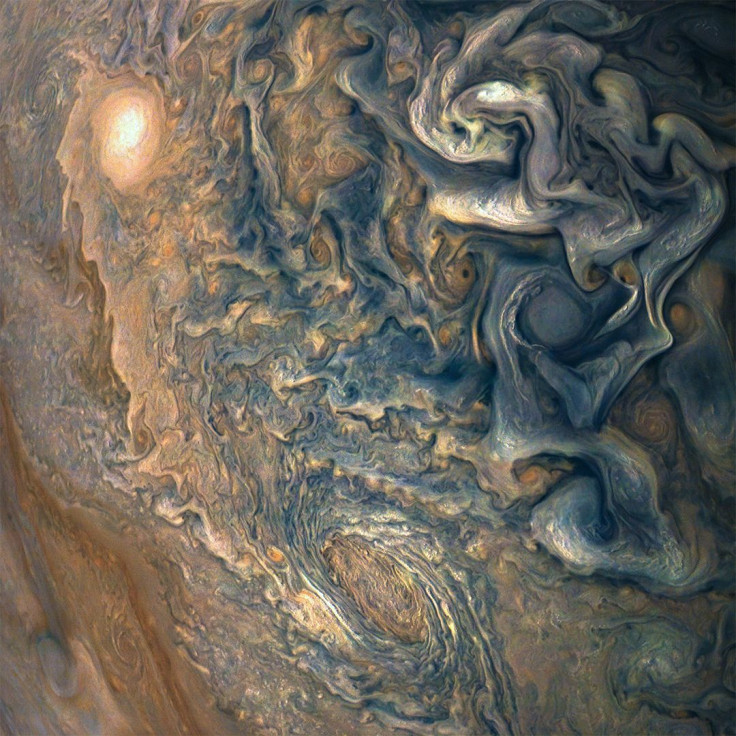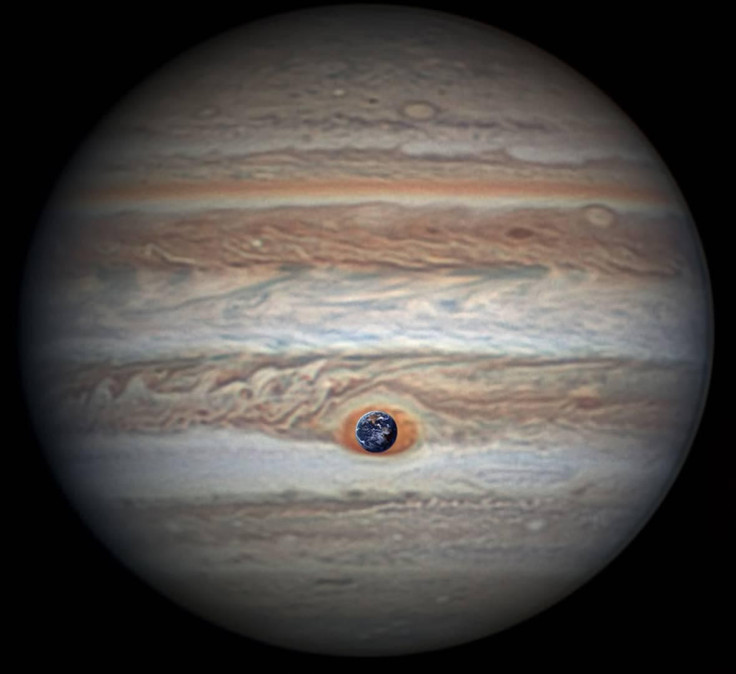NASA Photo: Juno Spacecraft Captures Wild Storm Clouds On Jupiter

Jupiter is the largest planet in the solar system and with that title comes some massive storms.
NASA’s Juno spacecraft hammered that idea home when it captured an image of the churning clouds in the planet’s atmosphere. The photo of the swirling storm clouds shows the massive power of both the gas giant and its atmosphere.
Juno was almost 8,300 miles above the raging clouds — a little more than the diameter of the Earth — at the time it snapped the picture, NASA said. In one corner of the frame is the boundary between night and day, known as a terminator.
The image was taken Dec. 16 and transmitted to NASA, which said citizen scientists processed the photo for the space agency.
Although it is not visible in this photo, the most famous storm on Jupiter is the Great Red Spot. That storm is a solar system champion: It is the largest and longest-lasting storm currently running on any of the planets in our neighborhood.
To put the storm into perspective, it is so big that it could swallow the Earth.
The Great Red Spot is about 10,000 miles across, with winds that blast between 200 and 300 miles per hour. And it has been swirling for at least a few hundred years.
It retains the title of the largest known storm in our solar system despite the fact that is shrinks by hundreds of miles each year.

But the Great Red Spot is just one of many cyclones raging on the gas giant.
“Early science results from NASA’s Juno mission portray the largest planet in our solar system as a turbulent world, with an intriguingly complex interior structure, energetic polar aurora, and huge polar cyclones,” NASA has said.
Juno could learn more about all of the Jovian storms as it continues its mission for NASA. The spacecraft launched in 2011 and has been orbiting Jupiter since Independence Day 2016.
Its images are available to the public, including the newest ones that have not been processed.
© Copyright IBTimes 2025. All rights reserved.



















